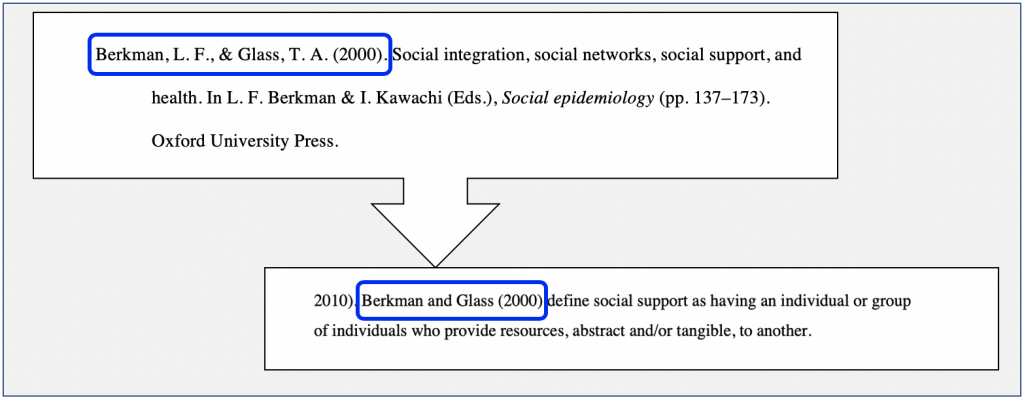What is an In-Text Citation?
Learning Outcome
After completing this chapter, you will be able to:
- Create and format in-text citations in APA Style.
There are two different ways that you can include in-text citations into your assignments: as a parenthetical citation or as a narrative citation.
The following example shows how these two types of in-text citations have been included in a paper. Click on the ![]() symbol to learn about them.
symbol to learn about them.
The image below provides an overview of these two types.
As you can see, an in-text citation is formatted using three key pieces:
- Parentheses,
- Author’s family name or group name, and
- Year.
In-text citation information is pulled directly from its matching reference list citation. So, it is easiest to create the reference citation first and then its matching in-text citation.
So far we have focused on paraphrasing examples. So next, we’re going to look at quotation examples for in-text citations.
When you use a direct quote instead of a paraphrase, you also need to include the quote’s location in the work. Additionally, when you paraphrase specific passages in longer-length works, you include the location. Location information is added to your in-text citation directly after the date. For example, a parenthetical citation would look like: (Smith, 2010, pp. 3-4).
For the following quotation examples, click on the ![]() symbol to learn about how to add in-text citations for short quotes and block quotes.
symbol to learn about how to add in-text citations for short quotes and block quotes.
Short Direct Quote In-Text Citation Examples
Narrative Citation
Parenthetical Citation
Block Direct Quote In-Text Citation Examples
Narrative Citation
Parenthetical Citation
The image below details some location information examples and their appropriate abbreviation.
Now that we’ve covered the basics of in-text citations, head to the next section to complete a few in-text citation practice activities.
Image attribution:
“Illuminated crumpled yellow paper light bulb idea on white background Free Photo” by Freepik is licensed under Freepik Licence, attribution required.





